The Dynamic Character of Northern Hemisphere Flow Regimes in a Near-Term Climate Change Projection
Abstract
1. Introduction
2. Data and Methods
2.1. Model and Reanalysis Data
2.2. Methods
3. Results
4. Discussion and Conclusions
Acknowledgments
Author Contributions
Conflicts of Interest
References
- Allen, R.A.; Fletcher, R.; Holmboe, J.; Namais, J.; Willett, H.C. Report on an Experiment on Five-Day Weather Forecasting; Papers in Physical Oceanography and Meteorology; Massachussetts Institute of Technology/Woods Hole Institute of Oceanography (MIT/WHOI): Woods Hole, MA, USA, 1940; Volume 8, 94p. [Google Scholar]
- Namias, J. The great Pacific anticyclone of the winter 1948–50: A case study in the evolution of climatic anomalies. J. Meteorol. 1951, 8, 251–261. [Google Scholar] [CrossRef]
- Lorenz, E.N. Seasonal and irregular variations of the Northern Hemisphere sea-level pressure profile. J. Meteorol. 1951, 8, 52–59. [Google Scholar] [CrossRef]
- Rex, D.F. Blocking action in the middle troposphere and its effect on regional climate II: The climatology of blocking action. Tellus 1950, 3, 275–301. [Google Scholar]
- Lorenz, E.N. Deterministic, non-periodic flow. J. Atmos. Sci. 1963, 20, 130–141. [Google Scholar] [CrossRef]
- Hansen, A.R. Observational characteristics of atmospheric planetary waves with bimodal amplitude distributions. Adv. Geophys. 1986, 29, 101–134. [Google Scholar]
- Sutera, A. Probability density distribution of large-scale atmospheric flow. Adv. Geophys. 1986, 29, 227–250. [Google Scholar]
- Charney, J.G.; DeVore, J.G. Multiple flow equilibria in the atmosphere and blocking. J. Atmos. Sci. 1979, 36, 1205–1216. [Google Scholar] [CrossRef]
- Mo, K.; Ghil, M. Cluster analysis of multiple planetary flow regimes. J. Geophys. Res. 1988, 93, 10927–10952. [Google Scholar] [CrossRef]
- Molteni, F.; Tibaldi, S.; Palmer, T.N. Regimes in the wintertime circulation over northern extratropics. I: Observational evidence. Q. J. R. Meteorol. Soc. 1990, 116, 31–67. [Google Scholar] [CrossRef]
- Smyth, P.; Ide, K.; Ghil, M. Multiple Regimes in Northern Hemisphere Height Fields via Mixture Model Clustering. J. Atmos. Sci. 1999, 56, 3704–3723. [Google Scholar] [CrossRef]
- Wallace, J.M.; Gutzler, D.S. Teleconnections in the geopotential height field during the northern hemisphere winter. Mon. Weather Rev. 1981, 109, 784–812. [Google Scholar] [CrossRef]
- Vautard, R. Multiple weather regimes over the North Atlantic: Analysis of precursors and successors. Mon. Weather Rev. 1990, 118, 2056–2081. [Google Scholar] [CrossRef]
- Franzke, C.; Woollings, T.; Martius, O. Persistent circulation regimes and preferred regime transitions in the North Atlantic. J. Atmos. Sci. 2011, 68, 2809–2825. [Google Scholar] [CrossRef]
- Michel, C.; Rivière, G. The link between Rossby wave breakings and weather regime transitions. J. Atmos. Sci. 2011, 68, 1730–1748. [Google Scholar] [CrossRef]
- Huang, W.; Chen, R.; Wang, B.; Wright, J.S.; Yang, Z.; Ma, W. Potential vorticity regimes over East Asia during winter. J. Geophys. Res. Atmos. 2016, 122. [Google Scholar] [CrossRef]
- Lau, K.M.; Sheu, P.J.; Kang, I.S. Multiscale low frequency circulation modes in the global atmosphere. J. Atmos. Sci. 1994, 51, 1169–1193. [Google Scholar] [CrossRef]
- O’Kane, T.J.; Monselesan, D.P.; Risbey, J.S. A Multiscale Reexamination of the Pacific–South American Pattern. Mon. Weather Rev. 2017, 145, 379–402. [Google Scholar] [CrossRef]
- Kravtsov, S.; Robertson, A.W.; Ghil, M. Bimodal Behavior in the Zonal Mean Flow of a Baroclinic β-Channel Model. J. Atmos. Res. 2005, 62, 1746–1769. [Google Scholar] [CrossRef]
- Luo, D.; Lupo, A.R.; Wan, H. Dynamics of eddy-driven low-frequency dipole modes. Part I: A simple model of North Atlantic Oscillations. J. Atmos. Sci. 2007, 64, 29–51. [Google Scholar] [CrossRef]
- Luo, D.; Gong, T.; Lupo, A.R. Dynamics of eddy-driven low-frequency dipole modes. Part II: Free mode characteristics of NAO and diagnostic study. J. Atmos. Sci. 2007, 64, 3–28. [Google Scholar] [CrossRef]
- Luo, D.; Cha, J.; Zhong, L.; Dai, A. A nonlinear multiscale interaction model for atmospheric blocking: The eddy-blocking matching mechanism. Q. J. R. Meteorol. Soc. 2014, 140, 1785–1808. [Google Scholar] [CrossRef]
- Lorenz, D.J.; DeWeaver, E.T. Tropopause height and wind response to global warming in IPCC scenario integrations. J. Geophys. Res. 2007, 112. [Google Scholar] [CrossRef]
- Hannachi, A.; Straus, D.M.; Franzke, C.L.E.; Corti, S.; Woollings, T. Low-frequency nonlinearity and regime behavior in the Northern Hemisphere extratropical atmosphere. Rev. Geophys. 2017, 55, 199–234. [Google Scholar] [CrossRef]
- Iqbal, W.; Leung, W.N.; Hnannachi, A. Analysis of the variability of the North Atlantic eddy-driven jet stream in CMIP5. Clim. Dyn. 2017. [Google Scholar] [CrossRef]
- Mokhov, I.I.; Akperov, M.G.; Prokofyeva, M.A.; Timazhev, A.V.; Lupo, A.R.; Le Treut, H. Blockings in the northern hemisphere and Euro-atlantic region: Estimates of changes from reanalysis data and model simulations. Dokl. Earth Sci. 2013, 449, 430–433. [Google Scholar] [CrossRef]
- Marti, O.; Braconnot, P.; Dufresne, J.-L.; Bellier, J.; Benshila, R.; Bony, S.; Brockmann, P.; Cadule, P.; Caubel, A.; Codron, F.; et al. Key features of the IPSL ocean atmosphere model and its sensitivity to atmospheric resolution. Clim. Dyn. 2010, 34, 1–26. [Google Scholar] [CrossRef]
- Intergovernmental Panel on Climate Change (IPCC). Climate Change 2013: The Physical Scientific Basis; Contributions of Working Group I to the Fifth Assessment Report of the Intergovernmental Panel on Climate Change; IPCC: Geneva, Switzerland, 2013; Available online: http://www.ipcc.ch (accessed on 20 December 2017).
- Mokhov, I.I.; Timazhev, A.V.; Lupo, A.R. Changes in atmospheric blocking characteristics within Euro-Atlantic region and Northern Hemisphere as a whole in the 21st century from model simulations using RCP anthropogenic scenarios. Glob. Planet. Chang. 2014, 122, 265–270. [Google Scholar] [CrossRef]
- Wiedenmann, J.M.; Lupo, A.R.; Mokhov, I.I.; Tikhonova, E.A. The climatology of blocking anticyclones for the Northern and Southern Hemispheres: Block Intensity as a diagnostic. J. Clim. 2002, 15, 3459–3473. [Google Scholar] [CrossRef]
- Lupo, A.R.; Mokhov, I.I.; Akperov, M.G.; Cherokulsky, A.V.; Athar, H. A dynamic analysis of the role of the planetary and synoptic scale in the summer of 2010 blocking episodes over the European part of Russia. Adv. Meteorol. 2012, 2012, 584257. [Google Scholar] [CrossRef]
- Dymnikov, V.P.; Kazantsev, Y.V.; Kharin, V.V. Information entropy and local Lyapunov exponents of barotropic atmospheric circulation. Izv. Atmos. Oc. Phys. 1992, 28, 425–432. [Google Scholar]
- Jensen, A.D.; Lupo, A.R. Using enstrophy advection as a diagnostic to identify blocking regime transition. Q. J. R. Meteorol. Soc. 2013. [Google Scholar] [CrossRef]
- Newberry, R.G.; Lupo, A.R.; Jensen, A.D.; Rodgriges Zalipynis, R.A. An Analysis of the Spring-to-Summer Transition in the West Central Plains for Application to Long Range Forecasting. Atmos. Clim. Sci. 2016, 6, 373–393. [Google Scholar] [CrossRef]
- Molteni, F.; Palmer, T.N. Predictability and finite-time instability of the northern winter circulation. Q. J. R. Meteorol. Soc. 1993, 119, 269–298. [Google Scholar] [CrossRef]
- Lupo, A.R.; Mokhov, I.I.; Dostoglou, S.; Kunz, A.R.; Burkhardt, J.P. The impact of the planetary scale on the decay of blocking and the use of phase diagrams and enstrophy as a diagnostic. Izv. Atmos. Oc. Phys. 2007, 42, 45–51. [Google Scholar] [CrossRef]
- Dufresne, J.-L.; Foujols, M.-A.; Denvil, S.; Caubel, A.; Marti, O.; Aumont, O.; Balkanski, Y.; Bekki, S.; Bellenger, H.; Benshila, R.; et al. Climate change projections using the IPSL-CM5 Earth System Model: From CMIP3 to CMIP5. Clim. Dyn. 2013, 40, 2123–2165. [Google Scholar] [CrossRef]
- Athar, H.; Lupo, A.R. Scale and stability analysis of blocking events from 2002–2004: A case study of an unusually persistent blocking event leading to a heat wave in the Gulf of Alaska during August 2004. Adv. Meteorol. 2010, 2010, 610263. [Google Scholar] [CrossRef]
- Lupo, A.R. A Diagnosis of two blocking events that occurred simultaneously in the Mid-Latitude Northern Hemisphere. Mon. Weather Rev. 1997, 125, 1801–1823. [Google Scholar] [CrossRef]
- Lupo, A.R.; Smith, P.J. Planetary and Synoptic-Scale Interactions during the Life Cycle of a Mid-Latitude Blocking Anticyclone over the North Atlantic. Tellus Spec. Issue Life Cycles Extr. Cyclones 1995, 47A, 575–596. [Google Scholar]
- Gu, D.; Philander, S.G.H. Secular changes of annual and interannual variability in the tropics during the past century. J. Clim. 1995, 8, 864–876. [Google Scholar] [CrossRef]
- Hu, Q.; Woodruff, C.M.; Mudrick, S.E. Interdecadal variations of annual precipitation in the Central United States. Bull. Am. Meteorol. Soc. 1998, 79, 221–230. [Google Scholar] [CrossRef]
- Birk, K.; Lupo, A.R.; Guinan, P.E.; Barbieri, C.E. The interannual variability of midwestern temperatures and precipitation as related to the ENSO and PDO. Atmosfera 2010, 23, 95–128. [Google Scholar]
- Jensen, A.D.; Lupo, A.R. Using enstrophy-based diagnostics in an ensemble for two blocking events. Adv. Meteorol. 2013, 2013, 693859. [Google Scholar] [CrossRef]
- Hansen, A.R.; Sutera, A. A comparison between planetary-wave flow regimes and blocking. Tellus 1993, 45A, 281–288. [Google Scholar] [CrossRef]
- Jensen, A.D.; Lupo, A.R. The role of deformation and other quantities in an equation for enstrophy as applied to atmospheric blocking. Dyn. Atmos. Oceans 2014, 66, 151–159. [Google Scholar] [CrossRef]
- Torrence, C.; Compo, G.P. A practical guide to wavelet analysis. Bull. Am. Meteorol. Soc. 1998, 79, 61–78. [Google Scholar] [CrossRef]
- Lejenas, H.; Okland, H. Characteristics of Northern Hemisphere blocking as determined from a long time series of observational data. Tellus 1983, 35A, 350–362. [Google Scholar] [CrossRef]
- Lorenz, E.N. A study of the predictability of a 28-variable model. Tellus 1965, 17, 321–333. [Google Scholar] [CrossRef]
- Palmer, T.N. Predictability of the atmosphere and oceans: From days to decades. Decadal Clim. Var. 1990, 44, 83–155. [Google Scholar]
- Barnes, E.A.; Polvani, L.M. Response of the midlatitude jets, and of their variability, to increased greenhouse gases in the CMIP5 models. J. Clim. 2013, 26, 7117–7135. [Google Scholar] [CrossRef]
- Barnes, E.A.; Polvani, L.M. CMIP5 projections of Arctic amplification, of the North American/North Atlantic circulation, and of their relationship. J. Clim. 2015, 28, 5254–5271. [Google Scholar] [CrossRef]
- Dawson, A.; Palmer, T.N.; Corti, S. Simulating regime structures in weather and climate prediction models. Geophys. Res. Lett. 2012, 39, L21805. [Google Scholar] [CrossRef]
- Sillmann, J.; Croci-Maspoli, M. Present and future atmospheric blocking and its impact on European and extreme climate. Geophys. Res. Lett. 2009, 36, L10702. [Google Scholar] [CrossRef]
- Renken, J.D.; Herman, J.J.; Bradshaw, T.R.; Market, P.S.; Lupo, A.R. The utility of the Bering Sea and Typhoon Rules in long range forecasting. Adv. Meteorol. 2017, 2017, 1765428. [Google Scholar] [CrossRef]
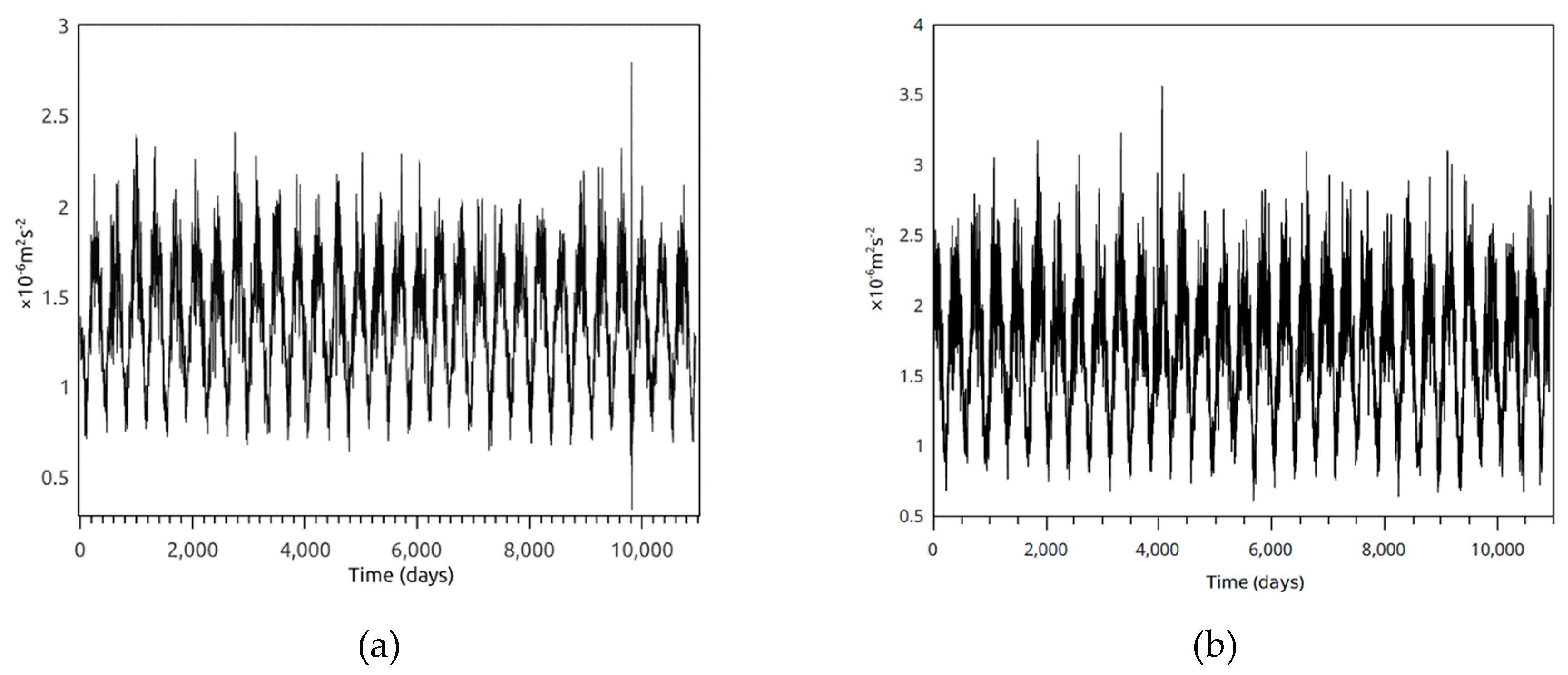
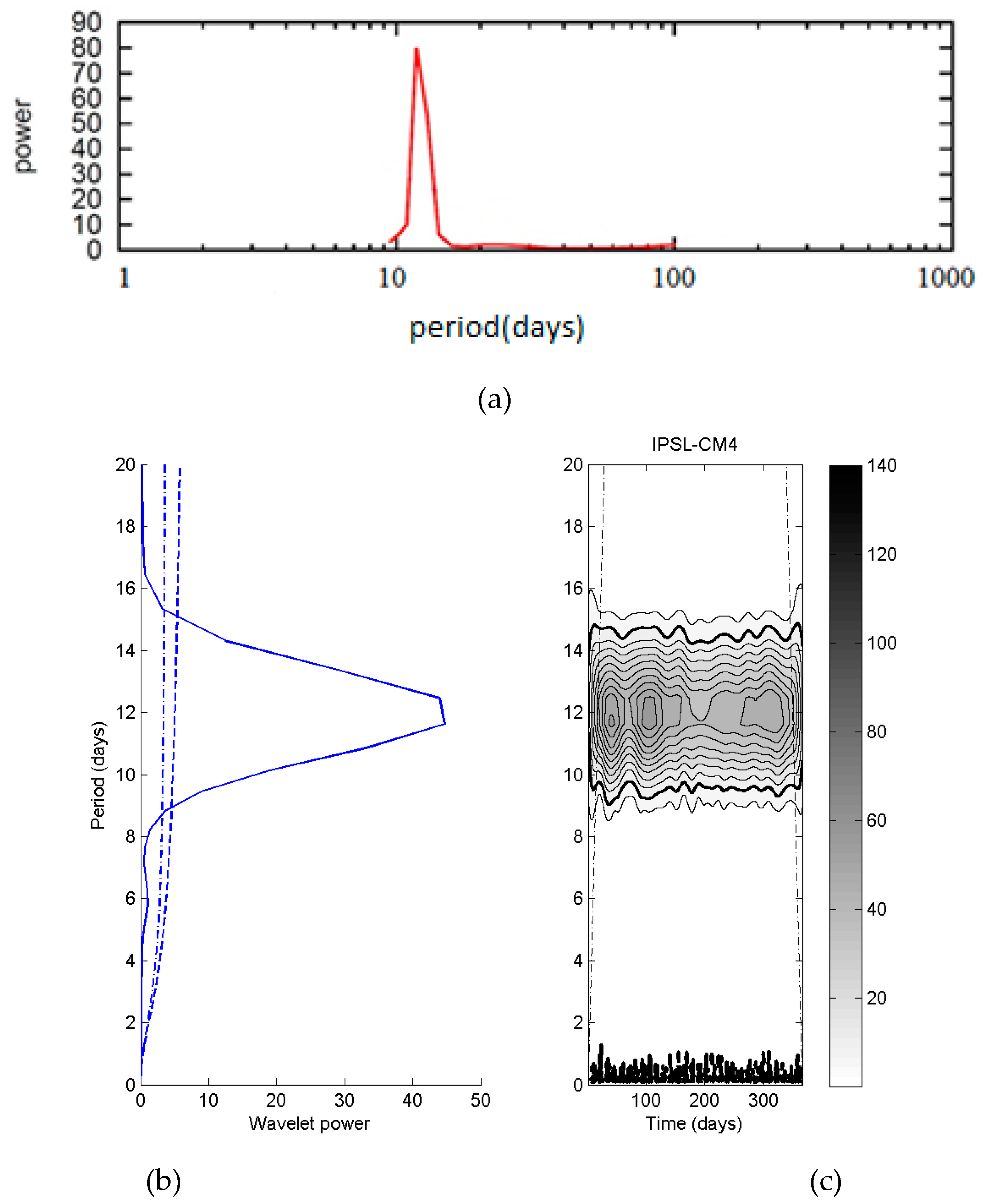
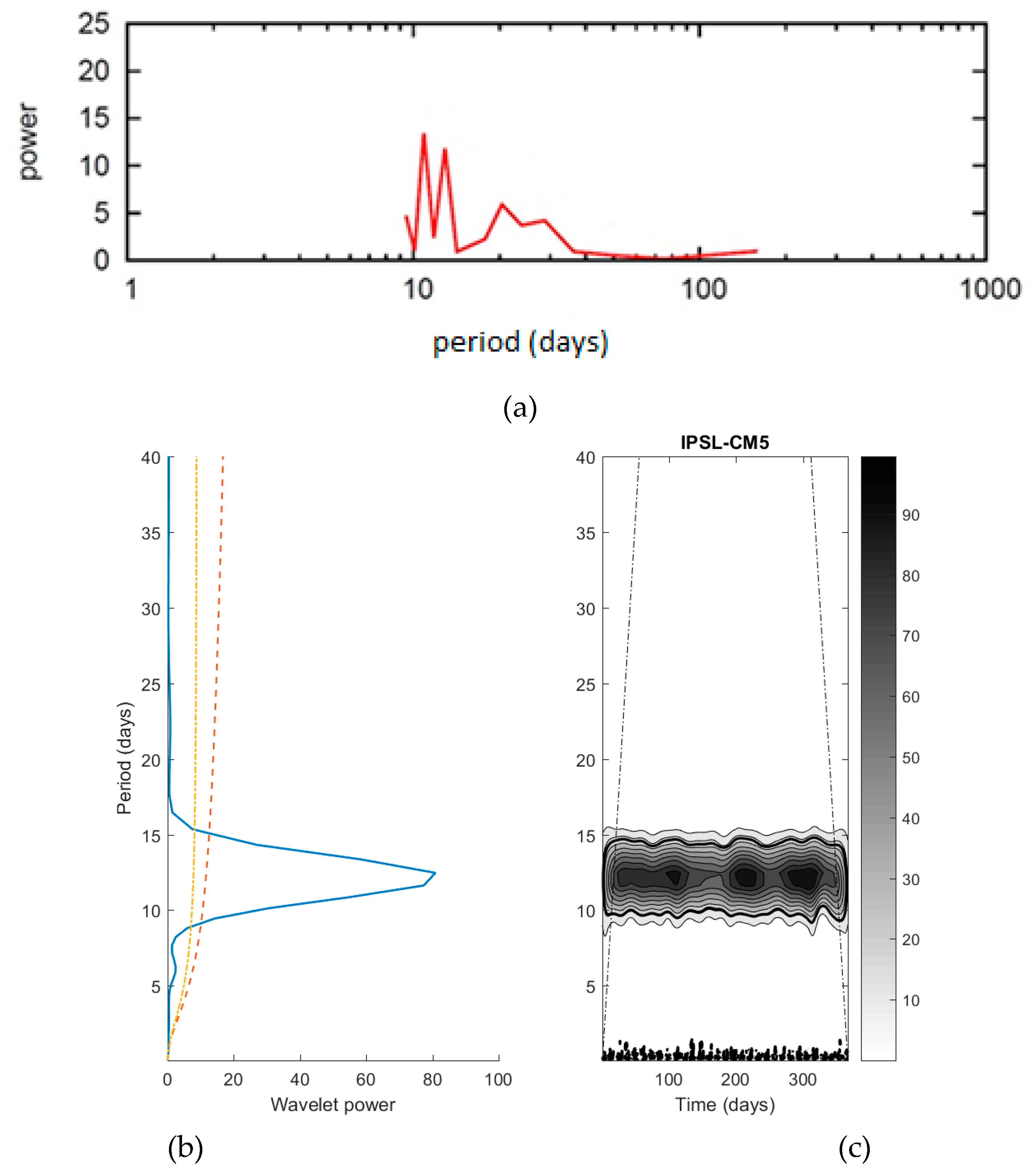
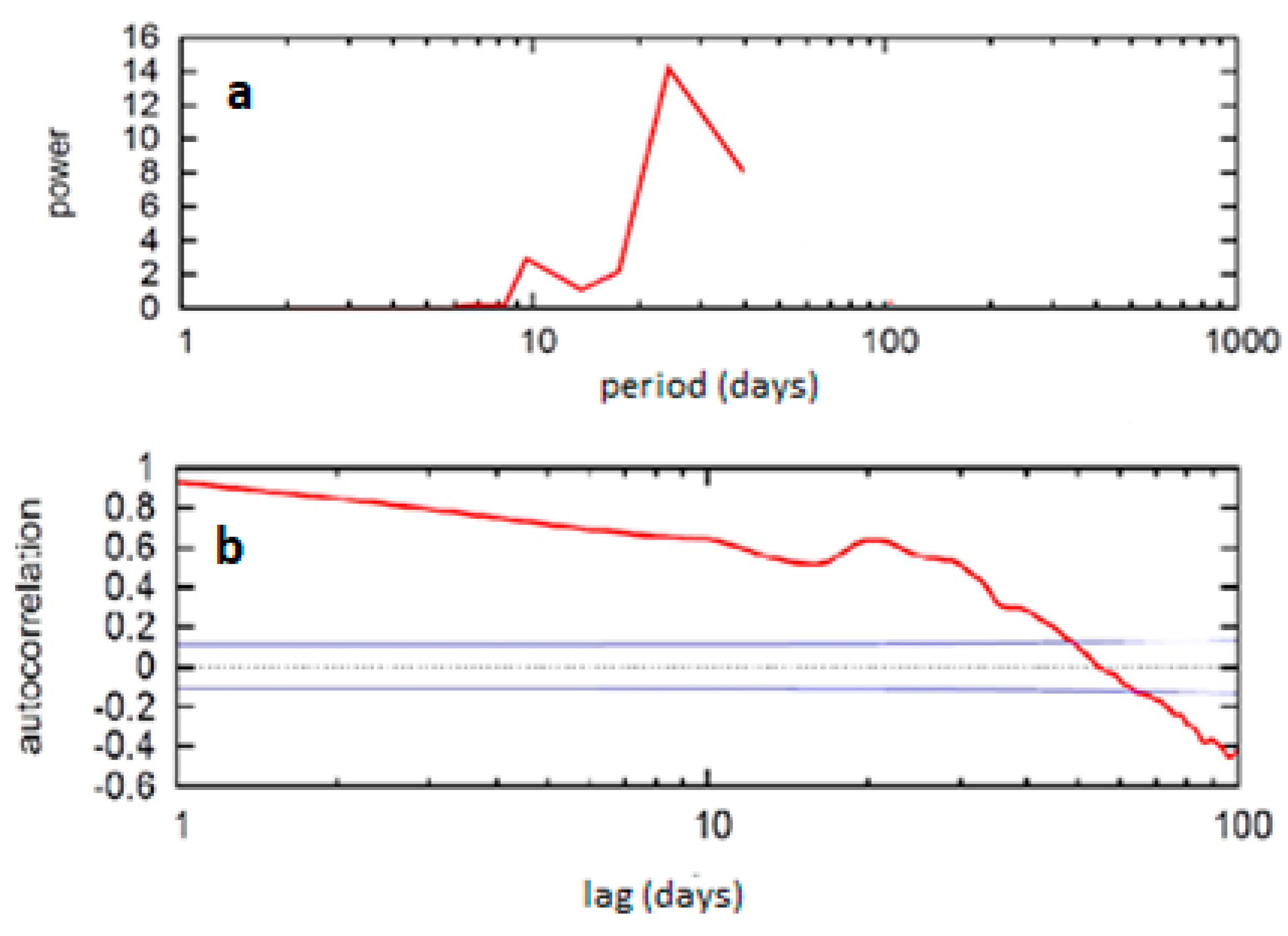

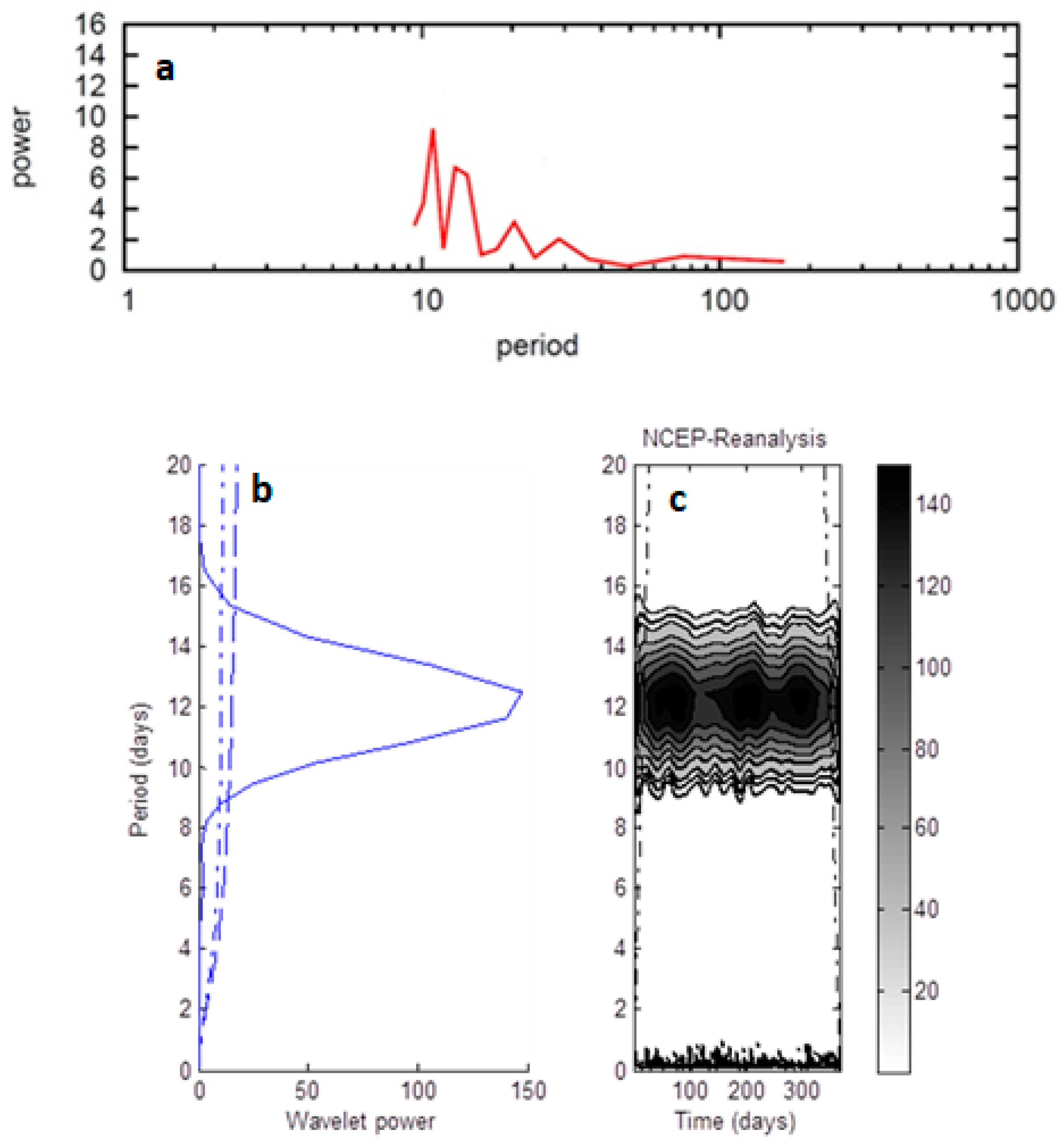
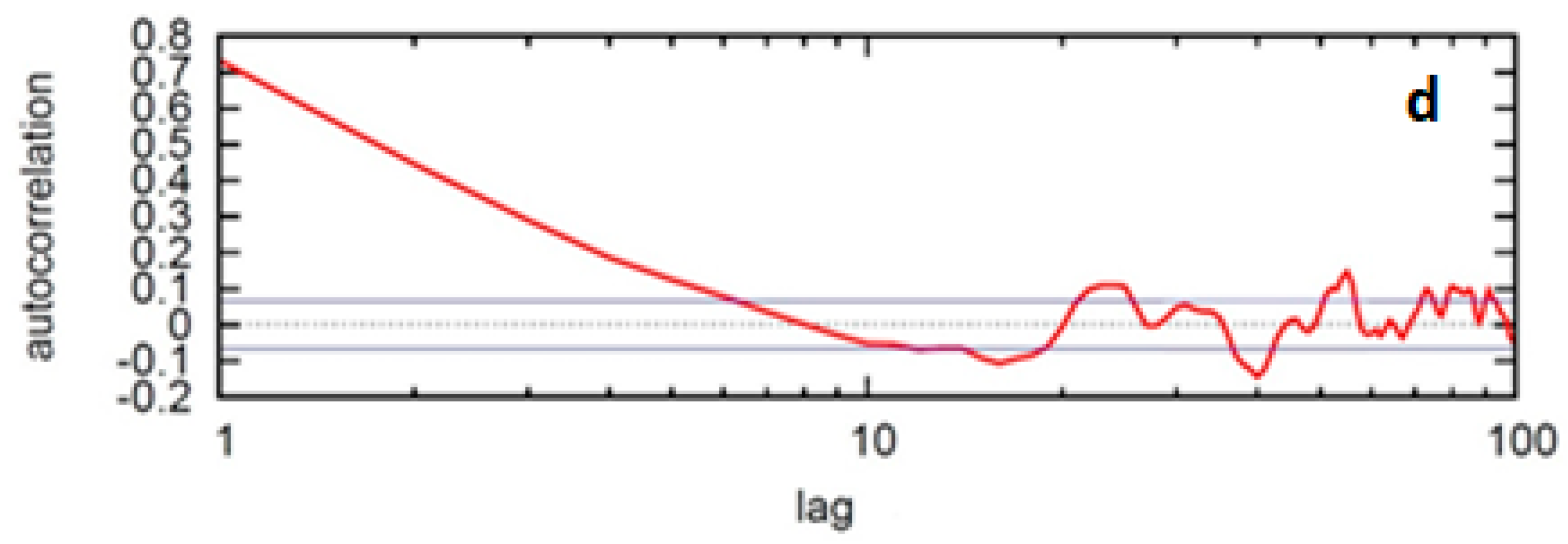
© 2018 by the authors. Licensee MDPI, Basel, Switzerland. This article is an open access article distributed under the terms and conditions of the Creative Commons Attribution (CC BY) license (http://creativecommons.org/licenses/by/4.0/).
Share and Cite
Jensen, A.D.; Akperov, M.G.; Mokhov, I.I.; Lupo, A.R.; Sun, F. The Dynamic Character of Northern Hemisphere Flow Regimes in a Near-Term Climate Change Projection. Atmosphere 2018, 9, 27. https://doi.org/10.3390/atmos9010027
Jensen AD, Akperov MG, Mokhov II, Lupo AR, Sun F. The Dynamic Character of Northern Hemisphere Flow Regimes in a Near-Term Climate Change Projection. Atmosphere. 2018; 9(1):27. https://doi.org/10.3390/atmos9010027
Chicago/Turabian StyleJensen, Andrew D., Mirseid G. Akperov, Igor I. Mokhov, Anthony R. Lupo, and Fengpeng Sun. 2018. "The Dynamic Character of Northern Hemisphere Flow Regimes in a Near-Term Climate Change Projection" Atmosphere 9, no. 1: 27. https://doi.org/10.3390/atmos9010027
APA StyleJensen, A. D., Akperov, M. G., Mokhov, I. I., Lupo, A. R., & Sun, F. (2018). The Dynamic Character of Northern Hemisphere Flow Regimes in a Near-Term Climate Change Projection. Atmosphere, 9(1), 27. https://doi.org/10.3390/atmos9010027





